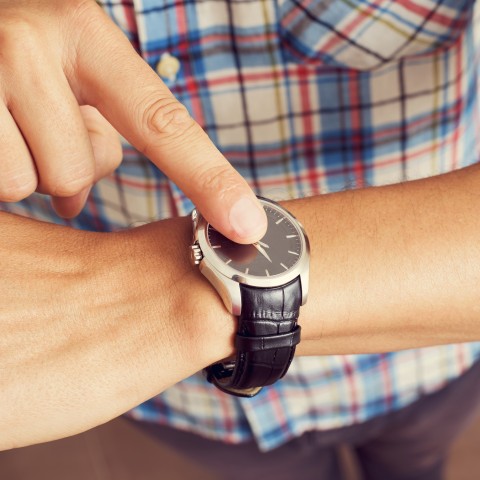
There was a colleague that I used to work with who is extremely good at using body language. Every time we had a meeting or a presentation, she would make use of her hand signals, gestures, facial expressions, or postures to make her talk more interesting.
The nonverbal signs that we use to communicate every day are referred to as body language. Nonverbal signals account for a significant portion of daily communication. The things we don’t say, from our facial expressions to hand signals or our bodily motions, can nonetheless convey a lot of information.
When learning languages, understanding how to use your body and facial expressions as well as to avoid rude gestures is very helpful to emphasize what you’re saying. In Vietnam, on the other hand, body gestures are not as common as in other countries due to cultural differences. Vietnamese people tend to be a little bit shy when using body language because it attracts attention more than using verbal language only. That’s the reason why someone who knows how to effectively use body gestures in Vietnam is considered very confident and special.
 Table of Contents
Table of Contents
- Cách chào hỏi bằng ngôn ngữ cơ thể (How to greet people using body language)
- Cử chỉ tay (Hand gestures)
- Giọng nói (Voice tone)
- Dấu hiệu nói dối (Signs of a lie)
- Dấu hiệu ai đó thích bạn (Signs showing someone is having a crush on you)
- Dấu hiệu ai đó giận dữ (Signs showing someone is angry)
- Cử chỉ với trẻ em (Gestures with children)
- Conclusion
1. Cách chào hỏi bằng ngôn ngữ cơ thể (How to greet people using body language)
Knowing that these body gestures mean hello in Vietnam can be surprising if you’re new here. The fact is, saying Xin chào is not always necessary. Instead, Vietnamese people have plenty of ways to greet each other by nonverbally communicating, especially using hand signals. For example:
- Vẫy tay, phẩy tay (Wave hand)
– How to do it: you wave your hand from left to right or from up to down as if calling someone.
– When to use: waving your hand can be used with friends, someone who is younger than you, babies, or even pets because it’s considered super casual and friendly.
– Note: When waving hands with older people, it means calling them rather than saying hello in general.
- Cười (Smile)
– How to do: have a smile on your face with eye contact
– When to use: smiling is suitable when greeting someone you haven’t met and don’t know how to address them or at a social party where there’s a lot of people and it’s not convenient to speak loudly.
– Note: Vietnamese people usually smile and say hi. However, when someone smiles only and walks away, it means they just want to be polite and don’t want to talk.

- Gật đầu (Nod your head)
– Meaning: similarly to smiling, nodding your head or eye contact is seen as saying Hello to someone you haven’t met before. In addition, it can also be used as a sign that “I’ll catch up with you in a bit”
– How to do: nod your head either from up to down or vice versa.
– When to use: with colleagues and acquaintances at a social event, a party, a meeting, or a conference. HOWEVER, nodding your head with elderly people is considered a disrespectful gesture.
- Khoanh tay chào (Fold your arms)
– Meaning: a way kids say Hello.
– How to do: you can either fold your arms with or without covering your palms on your chest.
– When to use: kids usually are asked to fold their arms when greeting their teacher, adults, or elderly people because it looks respectful.
– Note: it’s not very common in Vietnam because we can use “ạ” at the end of the sentence to show respect. Kids who fold their arms when greeting are considered very polite and well educated but if they don’t, it’s not seen as a disrespectful gesture.
- Cúi người (Bow)

– How to do: slightly bow your body and head.
– When to use: bowing in Vietnam is not as common as in Japan or Korea but people have been doing it lately to greet and show respect to their boss or manager.
- Bắt tay (Shake hands)
– Meaning: shaking hands and bowing can be used at the same time for greeting your colleagues, boss, or manager.
– How to do: Simply shake hands.
– When to use: shaking hands can be used anywhere in Vietnam but it’s most suitable in formal occasions or talking to someone who is in a higher position than you are.
- Vỗ vai/lưng (Pat one’s shoulder/back)
– Meaning: if someone didn’t see you in the first place, coming and slightly patting their shoulder or their back is a sign to gently say Hi.
– How to do: it doesn’t need to be a strong slap but rather a few slight pats instead.
– When to use: when saying hello to someone you know and want to get their attention.
– Note: Patting one’s shoulder or back should be used for very close friends or people you know very well. Men should avoid patting women’s backs unless they’re a couple or family. Otherwise, it can be seen as an impolite gesture.
- Gõ vào bàn/cửa (Knock on the table/door)
– Meaning: Another way to say hello in Vietnam using body gestures is to knock on the nearest table or door to get someone’s attention.
– When to use: when you don’t see anyone at the place and you want to call them or when you show up when people are in the middle of the conversation and you want to politely interrupt them.
- Gây tiếng động (Make some noise)
– Meaning: similarly to knocking on the table, making some noise when showing up is also another way to say Hi.
– How to do it: you can either make some strong steps on the floor, speak loudly before entering the room, or slightly cough.
– When to use: This can be used to say hello to your employees or people who you work with when they’re talking and you want to tell them that you’re coming.
– Note: It should not be over because it can be seen as a rude gesture.
Similarly to using body gestures to say hello, when saying goodbye, you can also use one of the following signals to nonverbally communicate:
- Vẫy tay, phẩy tay (Wave hand)
- Gật đầu (Nod your head)
- Khoanh tay chào (Fold your arms)
- Cúi người (Bow)
- Bắt tay (Shake hands)
2. Cử chỉ tay (Hand gestures)
You’re out of control with your hands and don’t know what to do with them? You’re not on your own! Most of the hand gestures or hand signals that I’m going to introduce to you are quite common in Vietnam and other countries when nonverbally communicating so it won’t be very hard to remember.
- Có (Yes)
– Meaning: flexibly give a thumbs up to indicate Yes, Okay or It’s good
– How to do: Thumbs up

- Không/Chưa (No)
– Meaning: it either means no or I haven’t
– How to do: wave your hand or/and shake your head.
- Tệ (Bad/Not good)
– How to do: this one is easy, you just need to give a thumbs down
– When to use: when food is not good, when you want to complain or something is just simply bad.
- Bình thường/tạm được (So so, okay)
– Meaning: When things are normal, not good, not bad, when you hesitate and haven’t made a decision yet.
– How to do: Hand outstretched, wave your fingers
- Tiền (Money/Cash)
– Meaning: There’s money, it takes money or I need money.
– How to do: The thumb touches the remaining fingers and keeps moving slightly from the little finger to the index finger and vice versa.
– Note : This should be used with your close people only, otherwise it can be seen as a pretty rude gesture as if you’re aggressively asking for money.
- Thanh toán (I’d like to pay)
– How to do: have eye contact with the waiter/waitress and draw a square in the air using your fingers, you can also say “Thanh toán”, “Tính tiền” at the same time or not.
– When to use: When you want to pay the bill or tell your friend to pay so you can leave.
- Mấy giờ rồi (What time is it?), Muộn rồi (It’s late)
– How to do: point your index finger to the watch or to your wrist if you don’t wear one.
– When to use: When you want to ask for the time or you want to tell your friend that it’s late.

- Chúng ta phải đi thôi (We gotta go)
– How to do: point your index finger to the watch or to your wrist if you don’t wear one, then point your thumb to the back or another direction.
– When to use: when you want to give your friend a signal that you have to leave or it’s time you both should go.
- No bụng (I’m full)
– How to do: rub your hand on your belly
– When to use: when you are already full or want to refuse food from someone
- Đói bụng (I’m hungry)
– How to do: slightly pat your hand on your belly a few times
– When to use: when you’re hungry or it’s break time.
- Giật mình (Startle) & Sợ/Ngạc nhiên (Scared/surprised)
– How to do: put your hand on your chest or on your mouth
– When to use: when someone scares you or you got surprised
- Tôi không biết (I don’t know)
- – How to do: Shrugs, shake your head
You might be wondering why crossing fingers wasn’t listed. The reason is that it’s not common in Vietnam. Even if you know it, there’s a high possibility that the person you’re talking to doesn’t know it. Therefore, try to remember these hand signals because they seem to be easier to remember rather than learning the actual phrases, don’t they?
3. Giọng nói (Voice tone)
In Vietnam, you can read someone’s status based on their voice tone in certain specific situations. For example:
- Nói nhanh, gấp gáp (Speak quickly, urgently): They might be in a rush or urgent situation unless they naturally speak fast.
- Nói chậm rãi (Speak slowly): They might be buying time or thinking of what’s going to say next. Sometimes, Vietnamese people also tend to repeat the questions if they need more time to think of the answer.
- Lên giọng ở cuối câu (Rising tone at the end): When someone repeats the question or what you have said with a rising tone at the end, they’re probably either thinking you’re joking, not hearing clearly, or surprised by what you’ve said.
- Xuống giọng ở cuối câu (Falling tone at the end): To be disappointed or upset.
Vietnamese people have different accents throughout the country. For example, people from central Vietnam have quite a strong accent in their voices. Therefore, they might sometimes sound like they’re angrily discussing something but they’re actually not. People from the West of Vietnam have a very nice and soft accent while people from the North have a stronger accent because the tones are clearer. Depending on where you are, people’s accents may vary.
4. Dấu hiệu nói dối (Signs of a lie)

People lie for many reasons such as to protect their feelings, confidence, self-esteem, or to protect others’ feelings. Besides “great” pretenders, Vietnamese people don’t usually tend to lie. In case they have to for some reason, here are a few signs you can tell that they might be lying:
- Gãi đầu, gãi tai (Scratch your head, scratch your ears)
- Nhìn sang hướng khác (Look at another direction)
- Gãi mũi (Scratch your nose)
- Đổi chủ đề (Change the topic)
- – When to use: When someone is having a hard time finding the answer, scratching their head or ears might be a sign that they’re lying. These are pretty basic ones and are mostly used by kids.
- – When to use: Looking away means someone is trying to avoid eye contact with you or find excuses for something.
- – When to use: In fact, some people, when lying, subconsciously put their hand on their face to scratch their nose or something like that to avoid attention.
- – When to use: Another sign to know if someone is lying or trying to cover the truth is when they change the topic. In Vietnam, when people do so and get caught, we usually say:
- + Đừng có đổi chủ đề nữa (Stop changing the topic)
+ Lại đổi chủ đề rồi (You change the topic again)
+ …
- Giải thích quá (Over explaining)
- Thay đổi tông giọng (Change voice tone)
- – When to use: When explaining too much about something, it either means the other person hasn’t acknowledged what you said and you want to repeat that or you’re lying about something and want to give extra details to make it more convincing.
- – When to use: People also tend to suddenly raise or lower their tone when talking. It’s either something special or they’re lying.
Bear in mind that these are not always true because there might be a possibility that they don’t lie or sometimes you don’t even realize that you are being lied to if you’re too into the conversation. Therefore, let’s take it easy and see them for fun.
5. Dấu hiệu ai đó thích bạn (Signs showing someone is having a crush on you)
Knowing someone likes you doesn’t depend on what they do or say only but also on their gestures or the way they nonverbally communicate with you.
- Lặp lại hành động hay lời nói của bạn (Mirror your actions or words)
Mirroring a conversation partner’s gestures is one of the techniques to build rapport and get trust. Mirroring someone that you’re interested in tells a lot about how attracted they are to you. In Vietnam, when someone is into you, they will have a tendency to copy some of your gestures, words, or favorite quote. Old Vietnamese couples even have something called “tướng phu thê” meaning “husband and wife look” because they’ve been living together for a long time and are probably influenced by each other’s gestures. That’s why when a young couple look alike, Vietnamese people will say they have “tướng phu thê.”
- Xoay người về phía bạn (Turn towards you)
Similar to mirroring your actions or words, someone is probably into you if they tend to turn towards you when talking. It means they’re interested in the conversations and want to get your full attention also.

- Có xu hướng chạm nhẹ vào bạn (Tends to lightly touch you)
I remember when my boyfriend and I were on the first date, he tended to touch my back and cover for me when we crossed the road or slightly touch my hand when we were talking. He’s still doing so but what I’m trying to say is when someone is really into you, he/she might unintentionally or intentionally touch you at some point. Depending on how close the relationship is, the frequency and level of touches can be different. Touching strangers’ bodies, in general, is not very common anywhere in the world I believe, and neither is it in Vietnam.
- Lắng nghe bạn chăm chú (Attentively listen to you)
Last but not least, when someone likes you, they will pay full attention to what you say and need.
6. Dấu hiệu ai đó giận dữ (Signs showing someone is angry)

Fun fact, Vietnamese people can be pretty bad tempered, especially people from the North like myself. When someone gets angry, there’s not much to cover it unless they’re extremely calm or good at hiding their emotions. Here are a few regular signs in Vietnam that tell someone is getting really uncomfortable or angry.
- Mặt đỏ (Your face turns red)
- Nói lớn hoặc quát tháo (Speak loudly or shout)
- Im lặng và bỏ đi (Keep silent and leave)
- Vò đầu bứt tai (Rub your head)
Pretty common, isn’t it?
Also, we usually say “Đổ thêm dầu vào lửa” (Add fuel to the fire or add insult to injury) to indicate someone’s actions have made a bad situation worse. This kind of action is considered pretty rude.
7. Cử chỉ với trẻ em (Gestures with children)

Showing affection to kids is one of the most sensitive things to do anywhere in the world and it is controversial in Vietnam.
Due to cultural habits, sometimes it is considered a rude gesture to a baby if the mother is not happy to let you do so. In Vietnam, most elderly people enjoy hugging, kissing, or touching newborn babies to show love. On the other hand, new mothers (mostly young women) are very uncomfortable when someone touches their baby without permission. Some kids don’t even like to be touched, including myself. I remember that I hated when my cousin’s brother kept pinching my cheeks when I was a little girl and now I keep doing the same thing with his little son, which is normal when we’re adults but not very pleasant when we were young.
Here are a few gestures that you can use when meeting children that you know.
- Véo má (Pinching cheek)
- Xoa đầu (Touching head)
- Bế (Lifting)
- Nắm tay (Holding hands)
- – When to use: when meeting kids that you know or are in your family. Some kids don’t like it and see it as a rude gesture so you can touch your index finger on their cheek instead.
- – When to use: touching kids’ heads is most common in Vietnam but it should be used for babies or small kids who are shorter than you because some older kids may not like it.
- – When to use: Lifting or hugging is obviously suitable for babies or young kids only. When kids are in primary school and above, it’s not very easy and suitable to lift them unless you’re very close or they know you very well.
- – When to use: Holding kids’ hands is very important especially when walking on the street because the traffic in Vietnam is quite complicated. In addition, kids might get lost in crowded tourist spots when traveling. Only let them walk alone once you’re sure that they’re old enough.
8. Conclusion
Body gestures can help you communicate nonverbally in Vietnam better. However, you will need to combine speaking the language also but they will absolutely help you connect to locals and understand each other better.
There are also other ways to communicate such as writing, texting, learning through the cultures … and knowing how to use body gestures in Vietnam is like adding some spices to your dish to finally elevate the flavors.
No matter if you’re an absolute beginner or intermediate, you’ll definitely find lessons, audio files, flashcards and other resources on VietnamesePod101. Our Youtube channel also provides interesting video lessons that will help you improve pronunciation every week.
What are you waiting for? Get your free lifetime account right now and get your real lesson by real teachers!










